Galaxies Galore: Hubble Celebrates Galaxies With New Photos All Week
![]()
Each day this week, NASA has been publishing a new galaxy image captured by the venerable Hubble Space Telescope. In addition to sharing fascinating information about some of the most interesting galaxies in the universe, each post has also been a visual treat.
Before diving into the glorious galaxy shots, briefly discussing what a galaxy is is worthwhile. “Galaxies are like massive cosmic neighborhoods, full of stars, gas, and dust all held together by gravity,” NASA explains.
Galaxies come in a wide variety of sizes and shapes. Some galaxies have millions of stars, while others include billions of stars. The Milky Way galaxy, Earth’s home, is one of billions of galaxies. Some recent estimates put the number of galaxies in the universe in the trillions. The Hubble Space Telescope has cast its sights on many galaxies, including nearly 10,000 in just a single image.
NGC 4654
NASA kicked off its galactic extravaganza on October 2 with a vibrant image of the intermediate spiral galaxy NGC 4654 in the Virgo constellation.
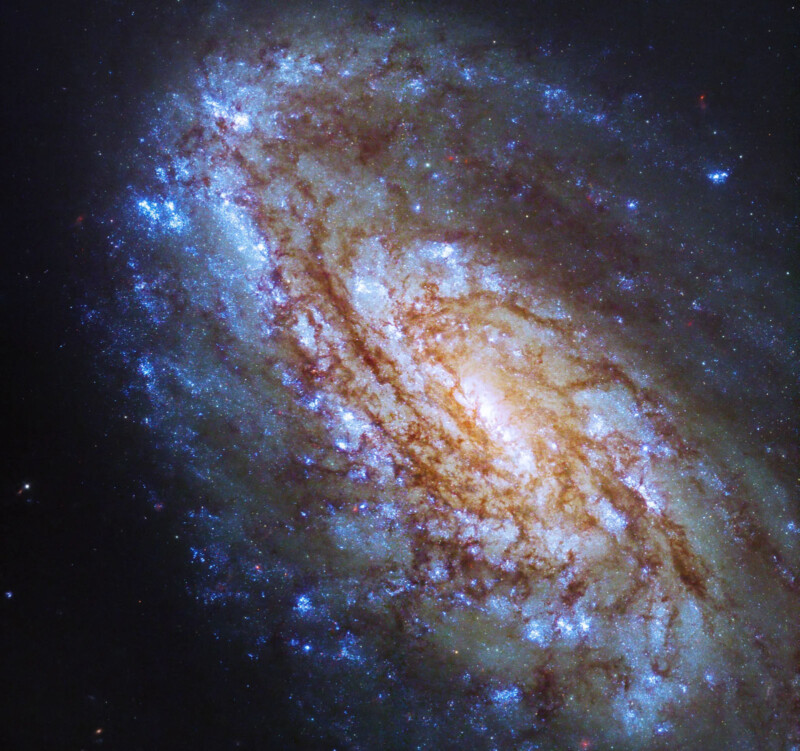
NGC 4654 is “one of many Virgo Cluster galaxies that have an asymmetric distribution of stars and of neutral hydrogen gas,” NASA explains. Astronomers believe that NGC 4654 may be experiencing “ram pressure stripping,” which results from the Virgo galaxy cluster’s strong gravitational force.
“NGC 4654 also had an interaction with the companion galaxy NGC 4639 about 500 million years ago. The gravity of NGC 4639 stripped NGC 4654’s gas along its edge, limiting star formation in that region and causing the asymmetrical distribution of the galaxy’s stars,” writes NASA. The galaxy is helpful to scientists because it enables them to examine the connection between young stars and the cold gas they require to form.
NGC 612 Is a Rare Radio Galaxy
Next is a portrait of a rare radio galaxy, the lenticular NGC 612. “Lenticular galaxies have a central bulge and disk much like spiral galaxies, but they lack the characteristic arms,” writes NASA. Galaxies like NGC 612 often have older star populations than other types of galaxies and do not typically feature much new star formation.
NGC 612 is an active galaxy, which explains why its center is so bright. It is about 100 times brighter than the combined light of its stars. It is also a Seyfert galaxy, the most common type of active galaxy. A Seyfert galaxy is a Type II Seyfert, meaning that the matter near the galaxy’s center moves “rather calmly around the nucleus.” Seyfert galaxies emit “large amounts of infrared radiation, despite looking normal in visible light.”
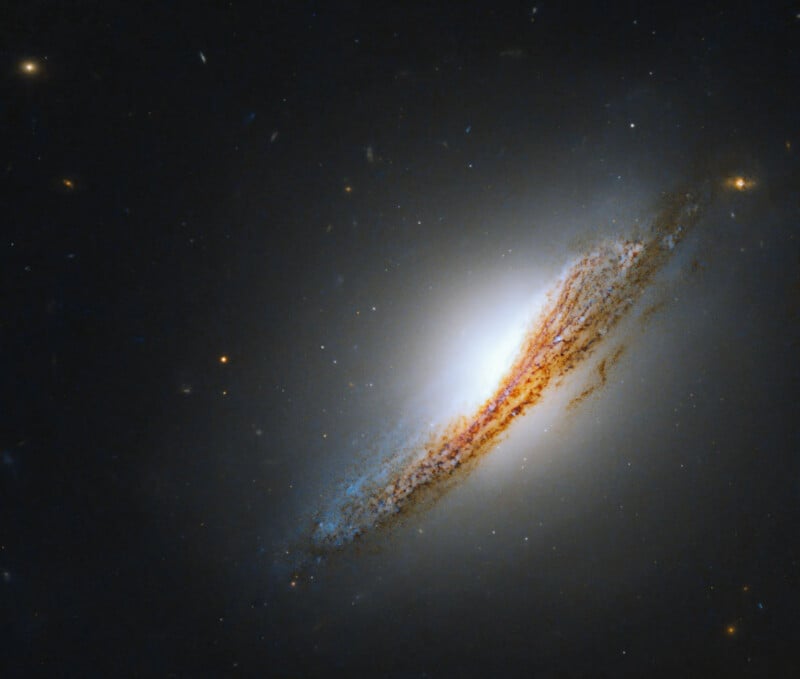
NGC 612 is one of five discovered non-elliptical radio galaxies | Credit: NASA’s Hubble Space Telescope, ESA, A. Barth (University of California – Irvine), and B. Boizelle (Brigham Young University) ; Processing: Gladys Kober (NASA/Catholic University of America)
As for NGC 612’s rarity, that comes down to the fact that it is a non-elliptical radio galaxy, a galaxy that emits significant radio waves. Astronomers have found only five galaxies like this so far, and it is still being determined what causes galaxies like NGC 612 to feature radio emission.
NGC 6951’s Blue Spiral Arms Amaze
NGC 6951 features bright blue spiral arms and a bright white galactic core. Located about 78 million light-years from Earth in the Cepheus constellation, NGC 6951 was discovered in 1877 by French astronomer Jerome Coggia, followed shortly after that by coincidental observations by American astronomer Lewis Swift in 1878.
This galaxy featured its peak star formation about 800 million years ago, then went dormant for 300 million years, only to start back up with new stars again. The entire galaxy is about 75,000 light-years across and is visible from the northern hemisphere on Earth.
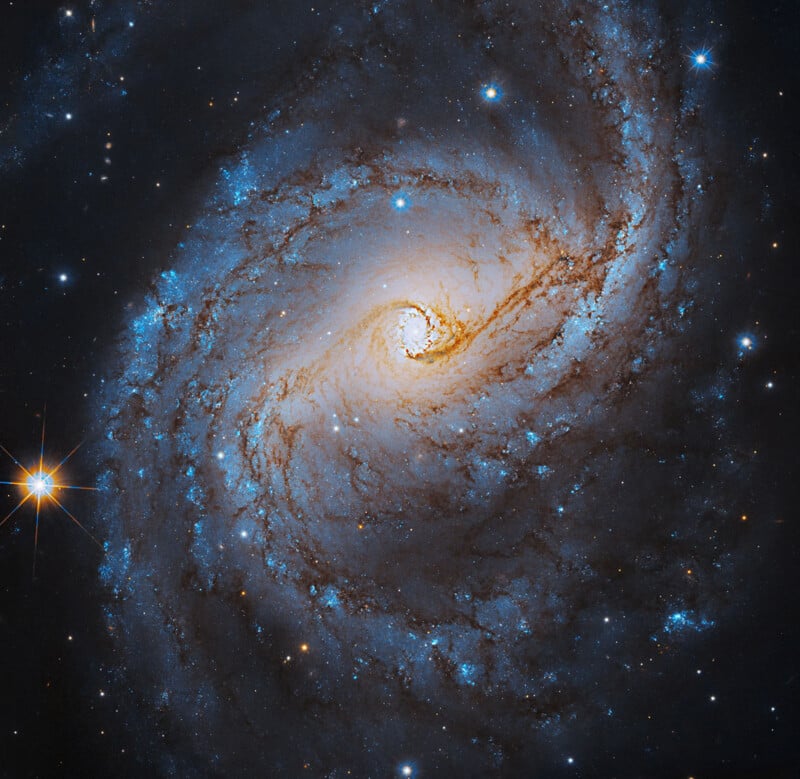
At the center of NGC 6951 is a supermassive black hole encircled by a ring of stars, gas, and dust about 3,700 light-years across. The “circumnuclear ring” is estimated to be perhaps 1.5 billion years old and has been actively forming stars for much of its life. Scientists think interstellar gas flows through the “dense, starry bar of the galaxy to the circumnuclear ring, which supplies new material for star formation. Up to 40 percent of the mass in the ring comes from relatively new stars less than 100 million years old. Spiral lanes of dust, shown in dark orange, connect the center of the galaxy to its outer regions, contributing more material for future star formation.”
Some of the stars in the galaxy have gone through massive stellar explosions (supernovae). Scientists have counted as many as six of these supernovae in the past 25 years alone. The galaxy is a hotbed for studying star explosions.
Barred Spiral Galaxy NGC 1087 Is Rich in Color But Not Star Formation
Next up is NGC 1087. The barred spiral galaxy is 87,000 light-years in diameter and is 80 million light-years from Earth. The galaxy was discovered in 1875 by British astronomer William Herschel. The galaxy is visible from both hemispheres of Earth.
In the new image, shot in ultraviolet, visible, and near-infrared light, the dark red streaks are cold molecular gas, the material that stars need to form. “The spots of bright pink signal areas where new stars are forming, characterized by the presence of ionized hydrogen, oxygen, and sulfur. The bluer regions hold hot, young stars formed earlier in the lifetime of this galaxy. Hubble observed NGC 1087 to study the connection between young stars and cold gas, and especially to determine what happens to gaseous regions after stars are formed within them.”
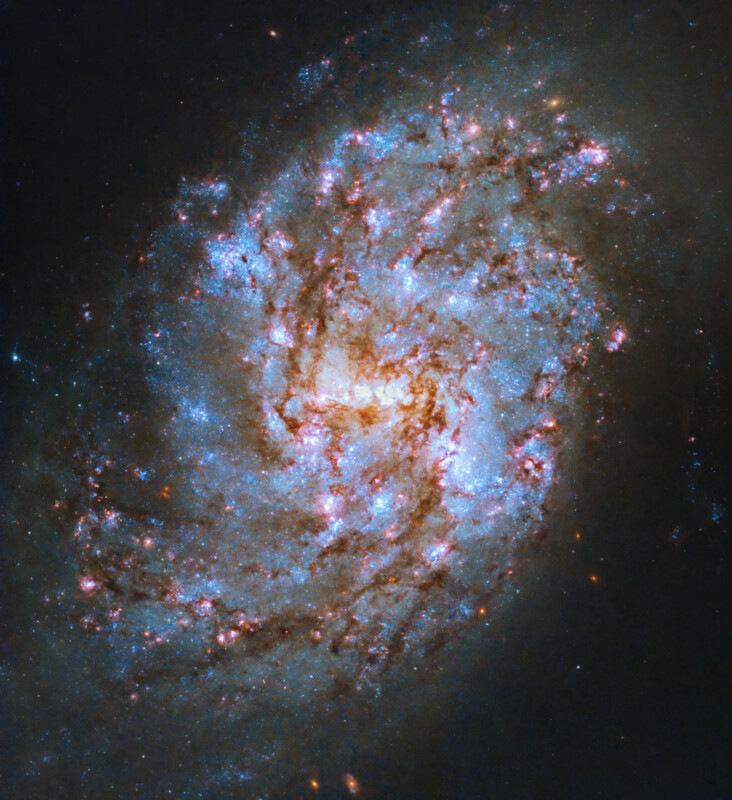
NGC 5068’s Black Hole Hides Behind Massive Star Bar
The newest galaxy image, which has yet to be shared on Hubble’s dedicated website, features NGC 5068.
Tucked behind the bright region of stars seen near the top of the image, the galaxy’s stellar bar is a black hole. The black hole’s gravitational force pulls the many stars together.
The James Webb Space Telescope also looked at the barred galaxy this year using its NIRCam instrument.
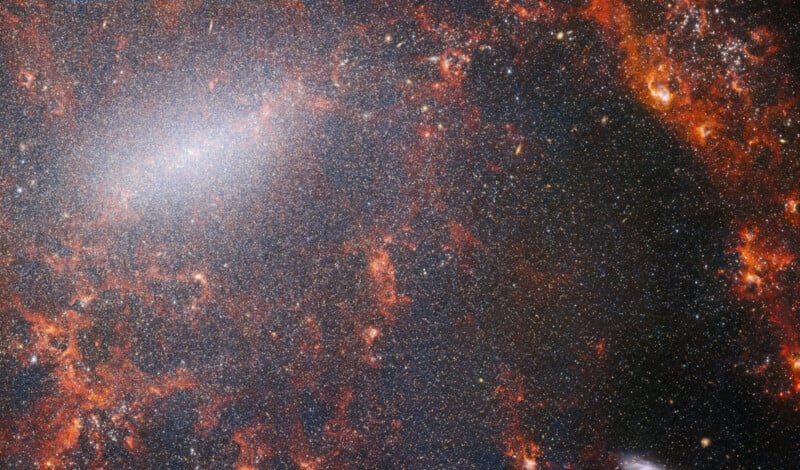
NGC 5068 (NIRCam) | Credit: ESA/Webb, NASA & CSA, J. Lee and the PHANGS-JWST Team
There is still one more new galaxy image slated to arrive this week and it will be featured on Hubble’s Instagram account.